Learn how to make fermented buckwheat bread that uses no starter and is also gluten-free and sugar-free.
One of the greatest things I discovered after adopting plant-based diet was raw buckwheat – you can make boiled porridge, raw buckwheat porridge or ricotta, ricotta creams for cakes or to eat as is; to make cookies and pancakes, use soaked groats for buckwheat muffins and cakes, just boil for side or make patties, and even make yeast-free fermented buckwheat bread.
How to Make Fermented Buckwheat Bread
What is Buckwheat?
Buckwheat spread to Europe and Russia in the 14th and the 15th century from China, and the Dutch brought it to USA in the 17th century. Many of you might not know that buckwheat is actually not a grain, but a fruit seed related to rhubarb and sorrel and therefore is gluten-free and safe for those with celiac disease.
Buckwheat consists mainly of carbohydrates, but like seeds, it is also high in protein. Buckwheat is a very good source of manganese and a good source of magnesium, dietary fibre, copper, and phosphorus. Furthermore, it contains health-promoting flavonoids rutin and querceitin. Rutin functions with vitamin C to maintain healthy capillaries, to help heal wounds, to help form collagen in connective tissue, and to support a healthy immune system. Quercetin has antioxidant and anti-inflammatory effects.
Buckwheat groats have low glycemic index, meaning that unlike wheat flour, its carbohydrates break down slower, which make them more filling for a longer period of time, with less of an undesirable impact on blood glucose and insulin. Buckwheat groat protein also has a better structure than wheat protein, which has a poor amount of the amino acid lysine, with twice the amount of fibre compared to wheat.
The Ingredients
This fermented buckwheat bread consists of very simple wholesome ingredients.
The main component is raw buckwheat groats i.e., not roasted buckwheat.
Then, for flavour, we’re using Himalayan salt and oregano.
Finally, let’s add some sunflower seeds. However, you can use any seeds of preference or, for a leaner version, discard them altogether.
The Process
Start by soaking raw buckwheat groats overnight or at least for 2 hours. It’s very important to rinse the soaked groats well (they get slimy after soaking) and then let drain for at least 5 minutes to get the extra water out. If you don’t follow this step with scrutiny, your batter may end up too runny and the bread won’t rise.
Next, place the drained buckwheat groats into blender with 290 ml of water. Blend on low speed until smooth batter forms.
Then, pour the batter into plastic or glass bowl (do not use metal bowl). Cover the bowl with clean cloth and place into a warm oven (35°C, 95°F).
Now it’s down to letting the batter ferment for 7 hours. After 7 hours you’ll see that the batter has risen and small bubbles have formed. If you don’t see that, let it ferment a bit longer.
Then, add all the other ingredients to this buckwheat bread recipe and gently and briefly stir with wooden or plastic spoon (do not use metal spoon). Do not over-mix as the batter will lose its fluffiness.
Pour the batter into a loaf pan lined with parchment paper. By the way, you can put the bread back into warm (not hot!) oven and let it rise for another few hours or you can bake it immediately for 1 hour at 175°C (350°F).
NB! Let the bread be in the oven while it warms up and DO NOT use speed heating or fan! Count the hour from when the oven has reached the right temperature. I put the timer to 1 hour and 10 minutes as it takes 10 minutes to reach 175°C (350°F).
If you used parchment paper, you can remove the bread from pan immediately and place it on folded kitchen paper (I use four layers) to absorb the moistness. Let the bread cool for at least 30 minutes before slicing (the longer the better).
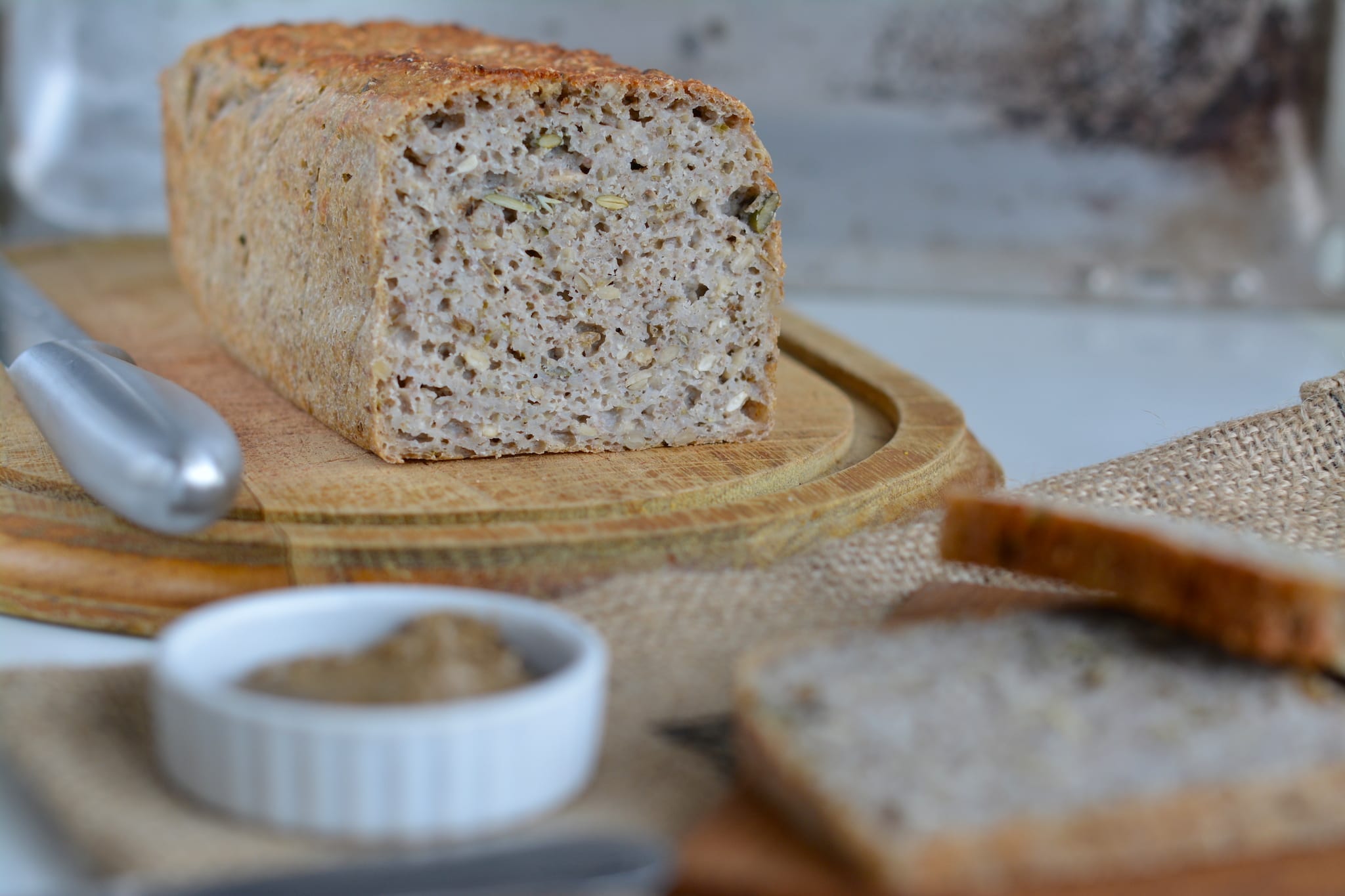
How to Serve
In my experience, freshly baked sourdough bread is so damn good that you don’t even need anything to accompany it with. However, should you disagree, here are some ideas:
Spread the bread with homemade hummus, avocado, nut or seed butter (tahini, almond butter, peanut butter, cashew butter), homemade applesauce, hummus, homemade vegan mayonnaise, or even sweet buckwheat ricotta.
In addition, top it with red cabbage coleslaw, sauerkraut, kimchi, tofu or tempeh slices, or vegan egg salad.
You can use a few or many of the options mentioned above and build an epic healthy vegan sandwich. On the photo below I used avocado spread, fermented tofu, kimchi and broccoli sprouts for delicious toasts.
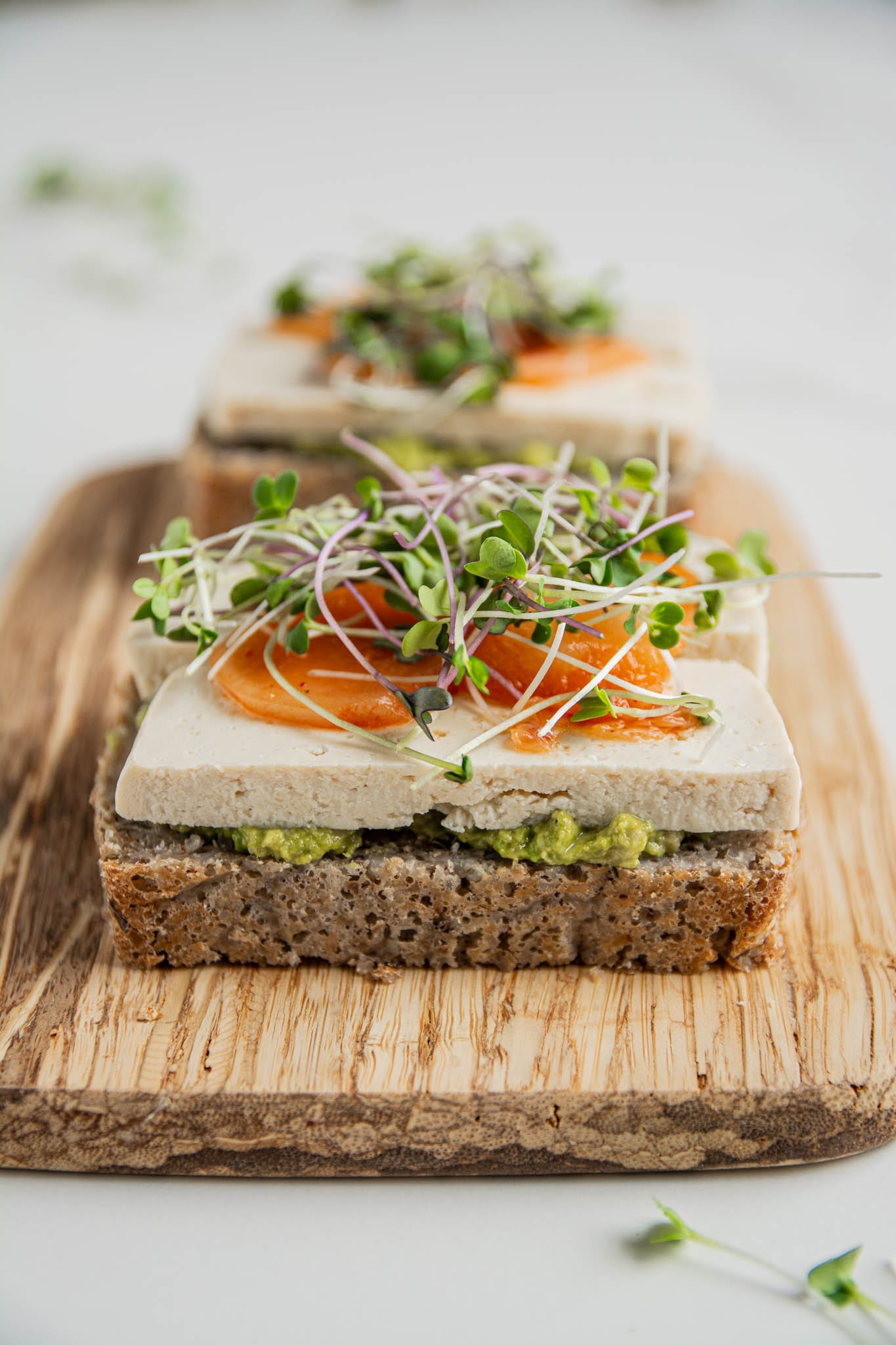
How to Store
When the bread is cooled, wrap it into a clean kitchen towel and stick it into a plastic bag to prevent losing too much moisture. It keeps well on countertop for 2 days.
For longer keeping, slice the bread up as soon as it’s cooled and store the individual slices in freezer. Heat them up in a microwave (for soft result) or in oven or toaster (for crunchy slices).
In order to toast the frozen sourdough bread slices in the oven, place them onto the rack (not on a baking sheet), set the oven to fast heat function (175°C, 350°F is enough) and timer to 10 minutes. When the time’s up, you’ll have fresh and crispy bread ready to enjoy.
I have made fermented buckwheat bread for two years now. I was a bit tired of rye bread and thought that it should be possible to ferment buckwheat as well. So, I started to search online (not to invent a wheel) and found a recipe by Concious Catering. After playing with the quantities and ingredients I developed my own favourite fermented buckwheat bread recipe.
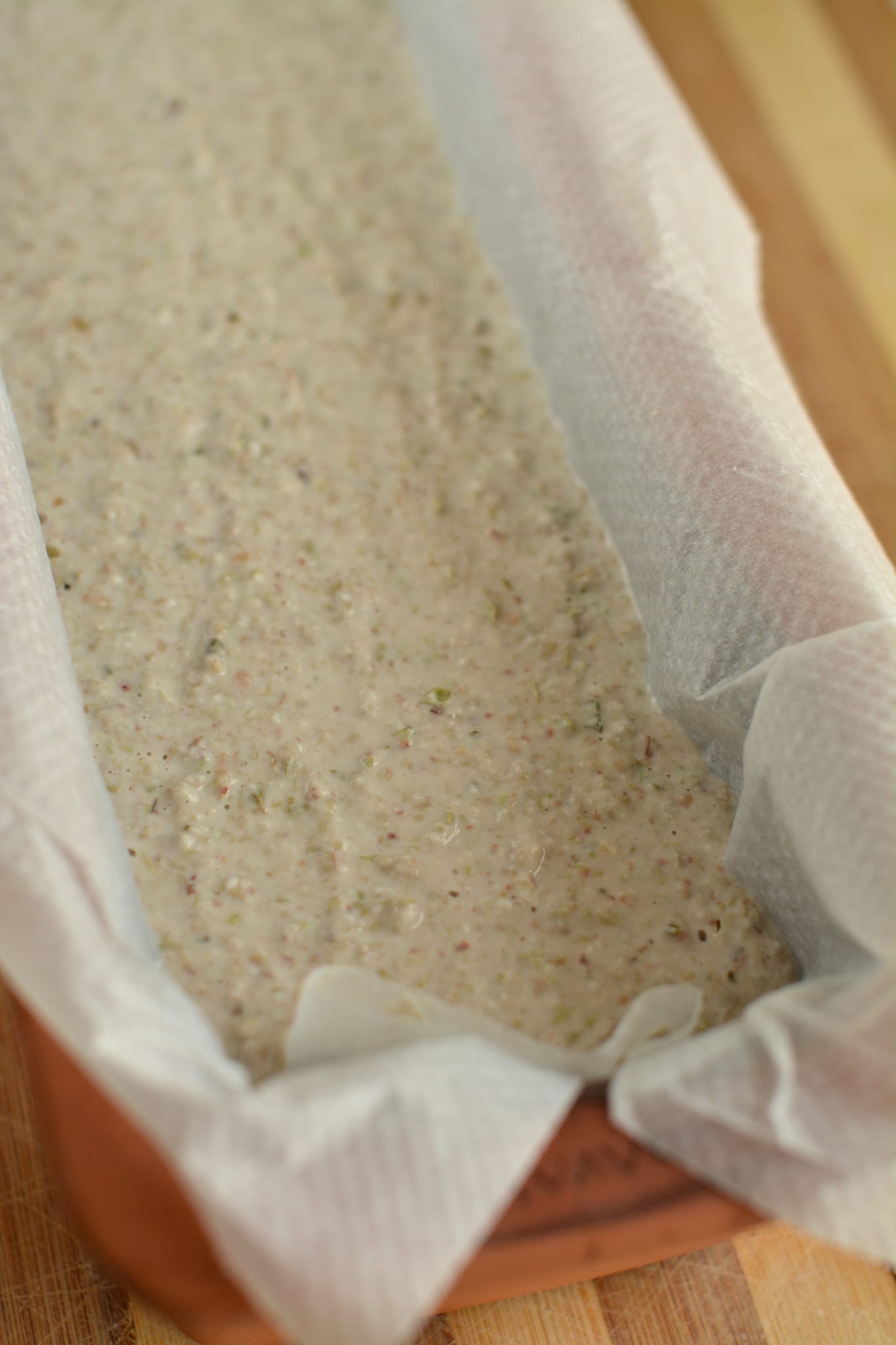
Make sure to watch the below video for visuals!
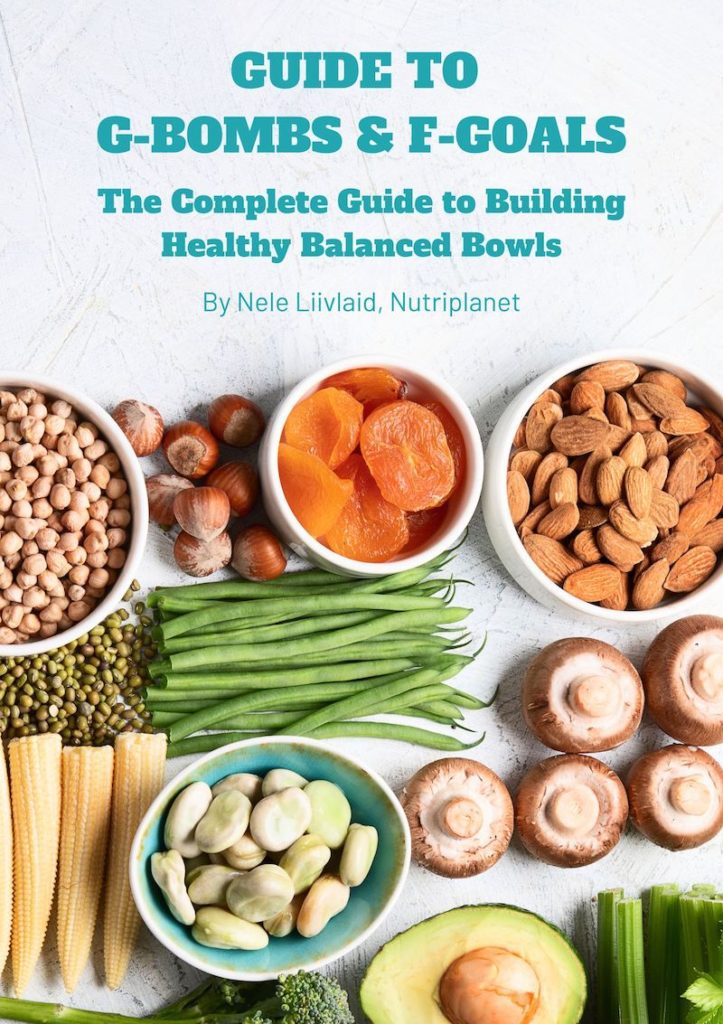
Step-by-step visual guide to building your own balanced bowls.
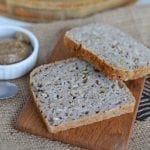
Fermented Buckwheat Bread Recipe
- Total Time: 1 hour 10 minutes
- Yield: 22 slices 1x
- Diet: Vegan
Description
Learn how to make fermented buckwheat bread that uses no starter and is also gluten-free and sugar-free.
Ingredients
- 425g (15oz) raw buckwheat groats
- 290ml or grams of water (10.2oz) + water for soaking buckwheat
- ½ tsp. Himalayan salt
- 2 tbsps. oregano
- 3 tbsps. of sunflower seeds
Instructions
- Soak buckwheat groats for at least 6 hours. It’s very important to rinse the soaked groats well (they get slimy after soaking) and let drain for at least 5 minutes to get the extra water out. If you don’t follow this step with scrutiny, your batter may end up too runny and the bread won’t rise.
- Place drained buckwheat groats into blender with 290ml of water. Blend on low speed until smooth batter forms.
- Pour the batter into plastic or glass bowl (do not use metal bowl). Cover the bowl with clean cloth and place into a warm oven (35°C, 95°F).
- Let the batter ferment for 7 hours. After 7 hours you’ll see that the batter has risen and small bubbles have formed. If you don’t see that, let it ferment a bit longer. Now add all the other ingredients to this buckwheat bread recipe, gently and briefly stir with wooden or plastic spoon (do not use metal spoon). Do not over-mix as the batter will lose its fluffiness.
- Pour the batter into a loaf pan lined with parchment paper. Now, you can put the bread back into warm (not hot!) oven and let it rise for another few hours or you can bake it immediately for 1 hour at 175°C (350°F). Let the bread be in the oven while it warms up. Count the hour from when the oven has reached the right temperature.
- If you used parchment paper, you can remove the bread from pan immediately and place it on folded kitchen paper (I use four layers) to absorb the moistness. Let the bread cool for at least 30 minutes before slicing (the longer the better).
Notes
One slice has 7.3 GL points.
- Prep Time: 10 minutes
- Cook Time: 1 hour
- Method: Baking
Nutrition
- Serving Size: 45g (1.6oz) slice (1/22 of recipe)
- Calories: 69.3 kcal
- Sodium: 26mg
- Fat: 1.07g
- Carbohydrates: 11.7g
- Fiber: 1.24g
- Protein: 2.58g
Zinc is an essential mineral that supports the immune system, digestive system, cellular growth and development, and more. This certified organic, liquid formula contains zinc derived from guava leaves, enhanced with Energized Trace Minerals for increased bioavailability.
Other combinations for flavouring:
- Olives and oregano
- Sundried tomatoes and oregano
- Sesame seeds and oregano
- Walnuts, prunes, cinnamon
- Sunflower seeds, pumpkin seeds, oregano
- Raisins, cinnamon
- Poppy seeds, goji berries
Tips on this fermented buckwheat bread:
- If you can’t set your oven to such low temperatures, ferment the bread batter at room temperature. I’d still recommend putting the bowl into oven for the most stable environment (less temperature changes or breeze). It’ll take about 16-24 hours.
- It is at its best when fresh.
- Slice the leftover bread and store in freezer. Heat up in the oven or toast slices whenever needed.
- Eat as it is or with hummus, guacamole or nut/seed spread for example.
- Should you like more sour taste, ferment the batter for longer.
Disclosure: this post contains affiliate links. As an Amazon Associate and Global Healing affiliate I earn from qualifying purchases. For every purchase made from the links in this post, you’ll be able to support my work. So you can look after your health, and contribute to my mission at the same time. Thank you!
Feel free to PIN the below image!
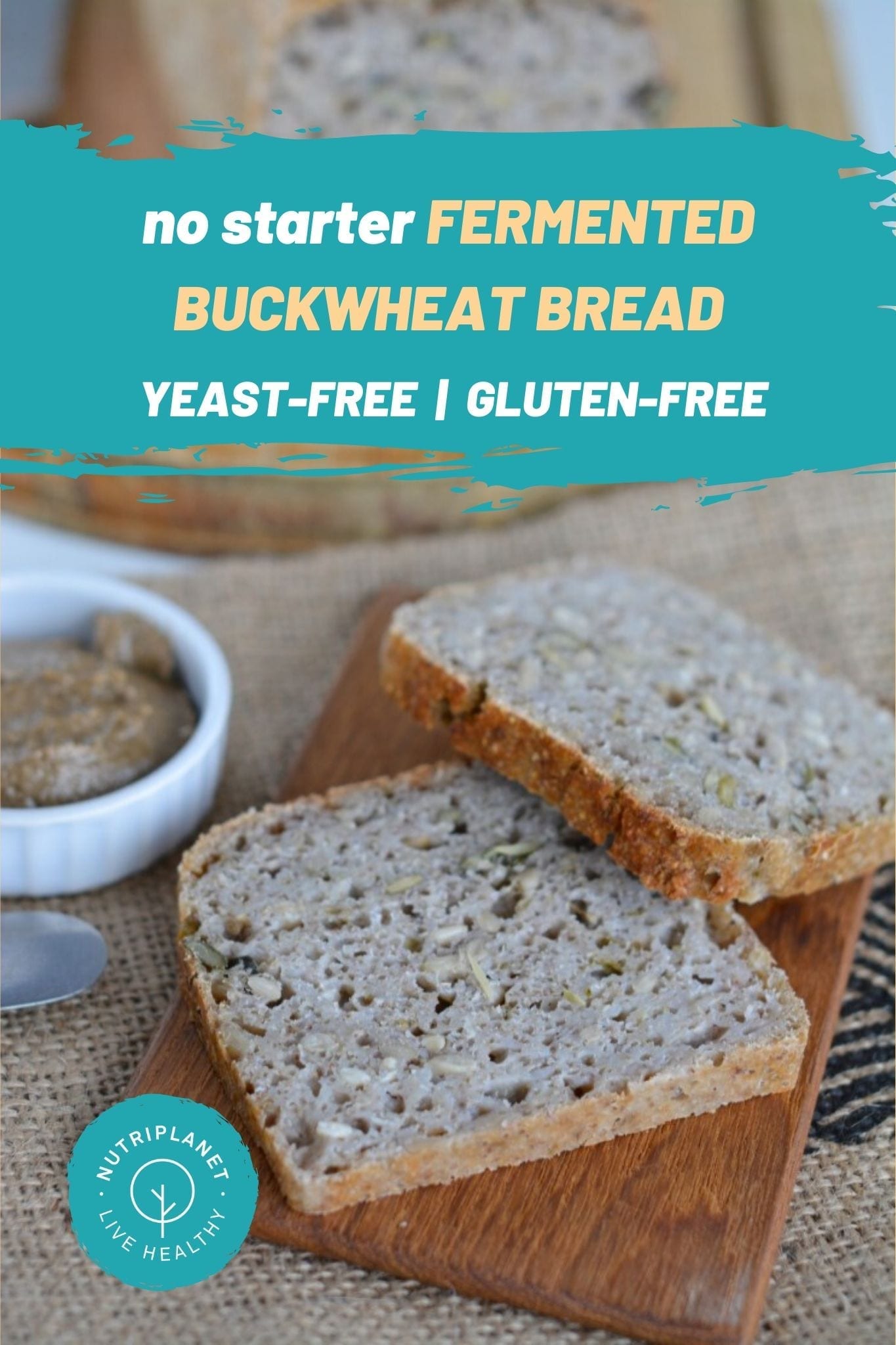
This post is also available in: Spanish

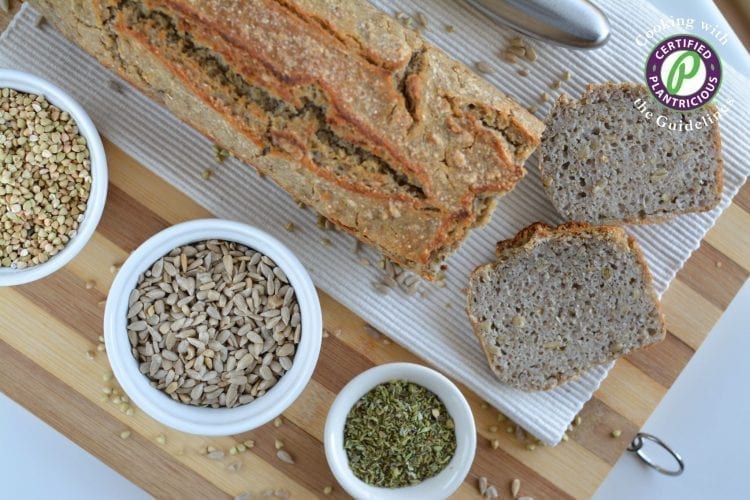
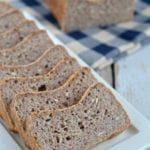
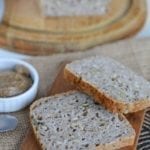
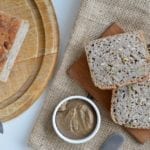









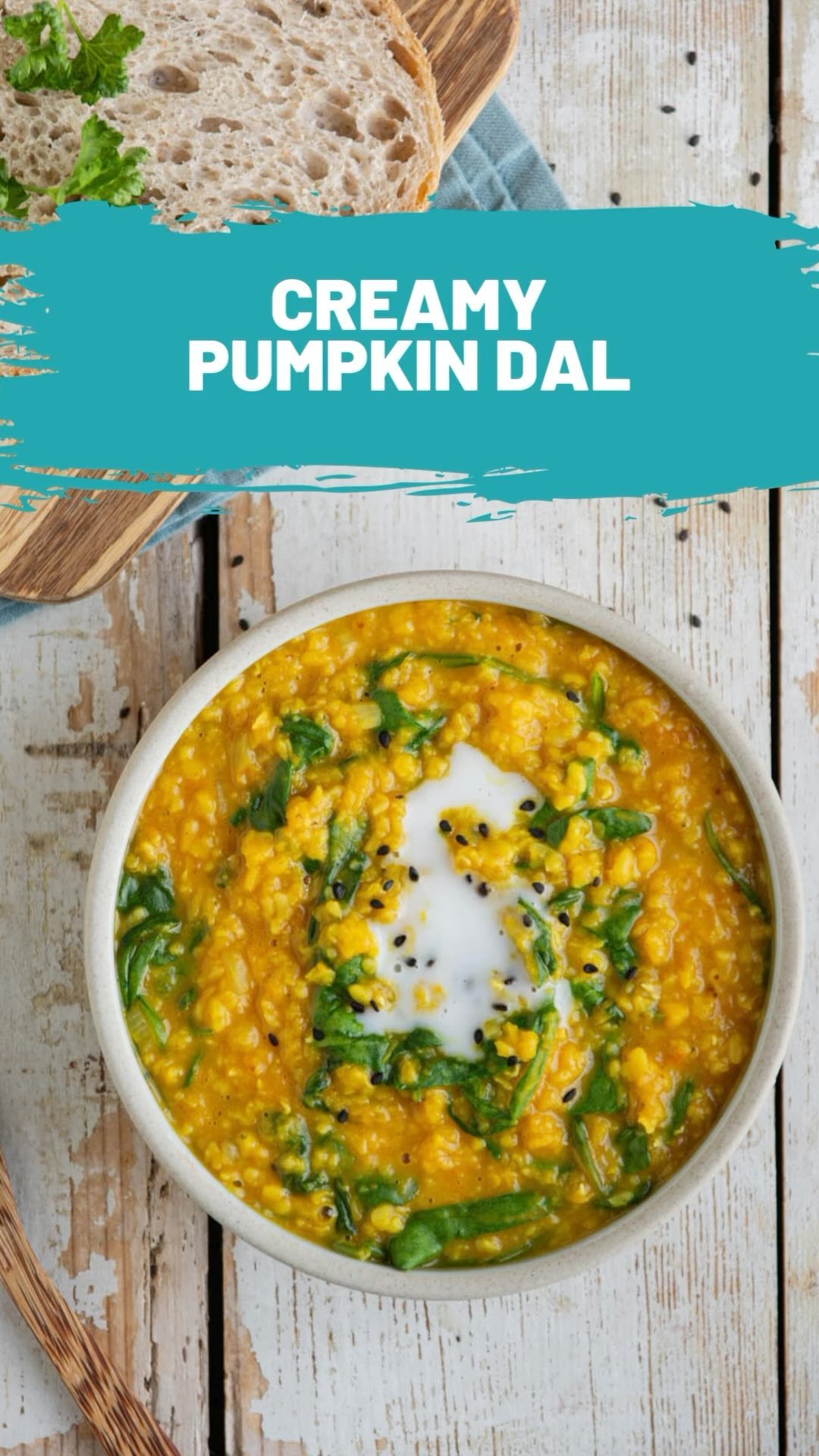

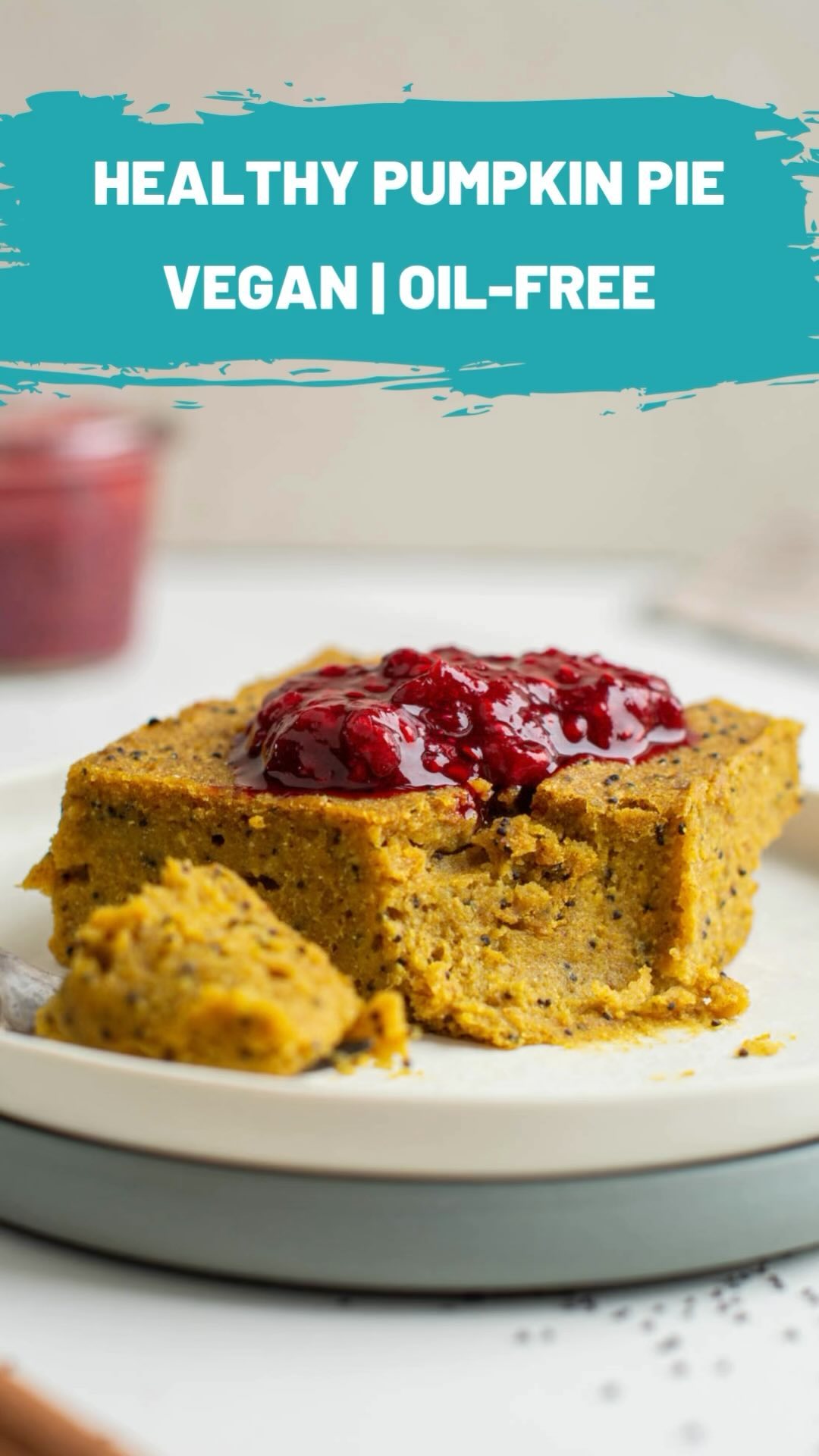










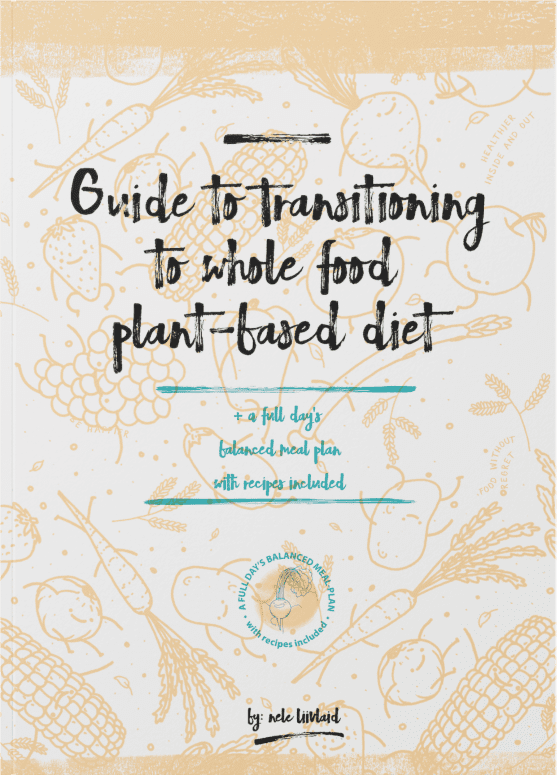
It’s about 72 F here. I ended up baking and I think it turned out okay! Not as fluffy looking as yours but practice makes perfect. 🙂 Thanks for the great recipe and for moving/fixing the video! <3
I’m glad it turned out! You could try adding a bit less liquid next time and see if it works better for your bread. Also, try substituting about 100g (3.5oz) of buckwheat with quinoa and add about 280g (9.9oz) water when blending. I find it ferments better and quicker with some quinoa.
And more — even if your oven doesn’t go as low as 95F, put the bowl into oven with door closed anyway for more stable environment.
I don’t understand what you mean by 300g water. I have never heard anyone measure water in grams?!?!?! We measure it in ml, dl or l…
As you prefer — 300g of water equals 300ml of water. I prefer scale over cups as it’s more accurate.
Hi Niele,
I had soaked buckwheat in my freezer and was wondering what to do with it . I checked some recipes I had saved awhile ago which included yours. I want to try this recipe but I don’t remember if the quantity I soaked was a cup or less. I have a little over a cup, which is 196g, that won’t be enough for a whole loaf but will it enough for half of this same recipe?
Hi Ti!
I think you meant fridge?
Half of the bread recipe would be:
— 213g dry buckwheat groats
— 373g soaked buckwheat groats.
If you had 196g dry buckwheat groats, then add 134g of water to soaked groats. In case you have 196g of soaked buckwheat, add 76g of water to blend the batter.
I hope it turns out well!
P.S. Many of my muffin as well as cake recipes use soaked buckwheat as well!
Thanks Nele, I kept it in the freezer but now it’s defrosted in the fridge. Does it mean that if I bake bread with the soaked buckwheat, it would be a very small loaf?
Hi again! In case you have 196 of soaked groats, it makes 26% of the recipe (about a quarter). However, if you started with 196g of dry groats, you’d have 46% of the recipe (almost half).
Thanks
You’re very welcome! 🙂